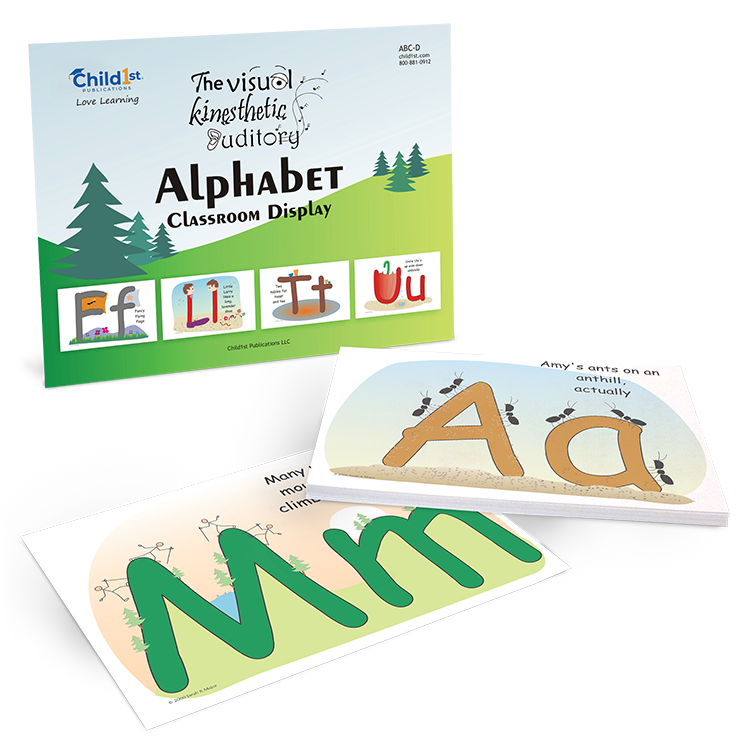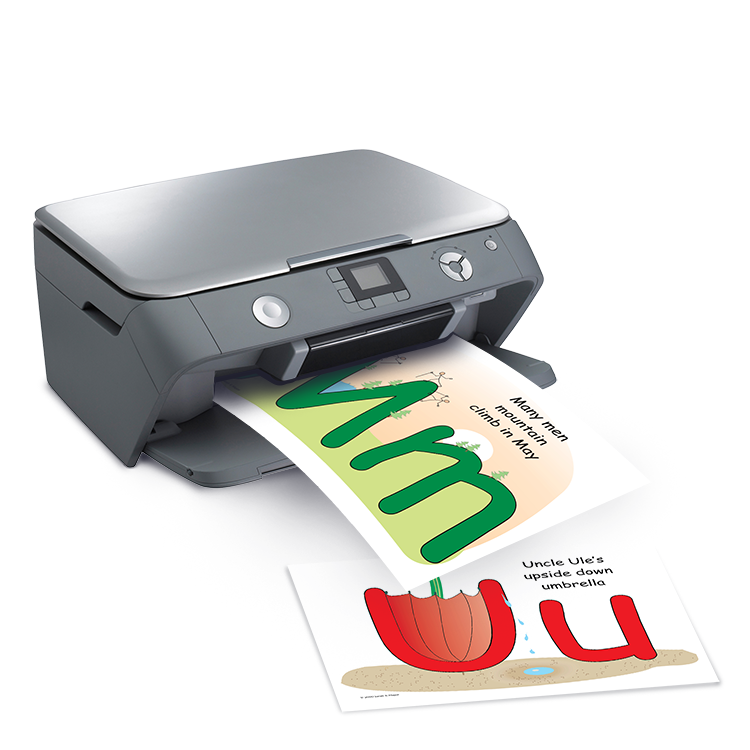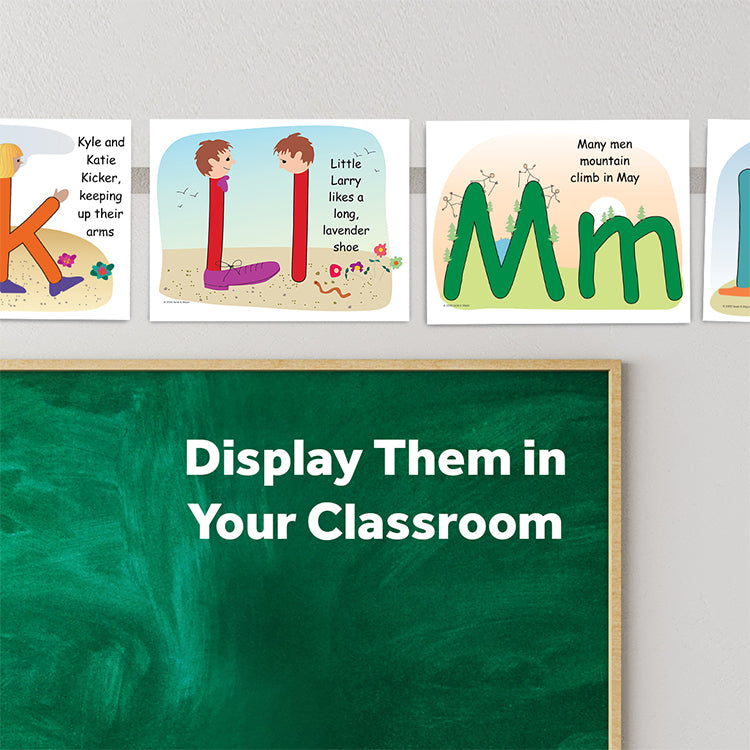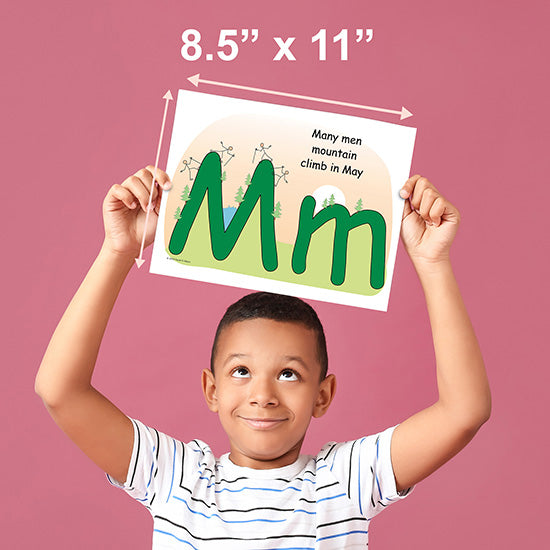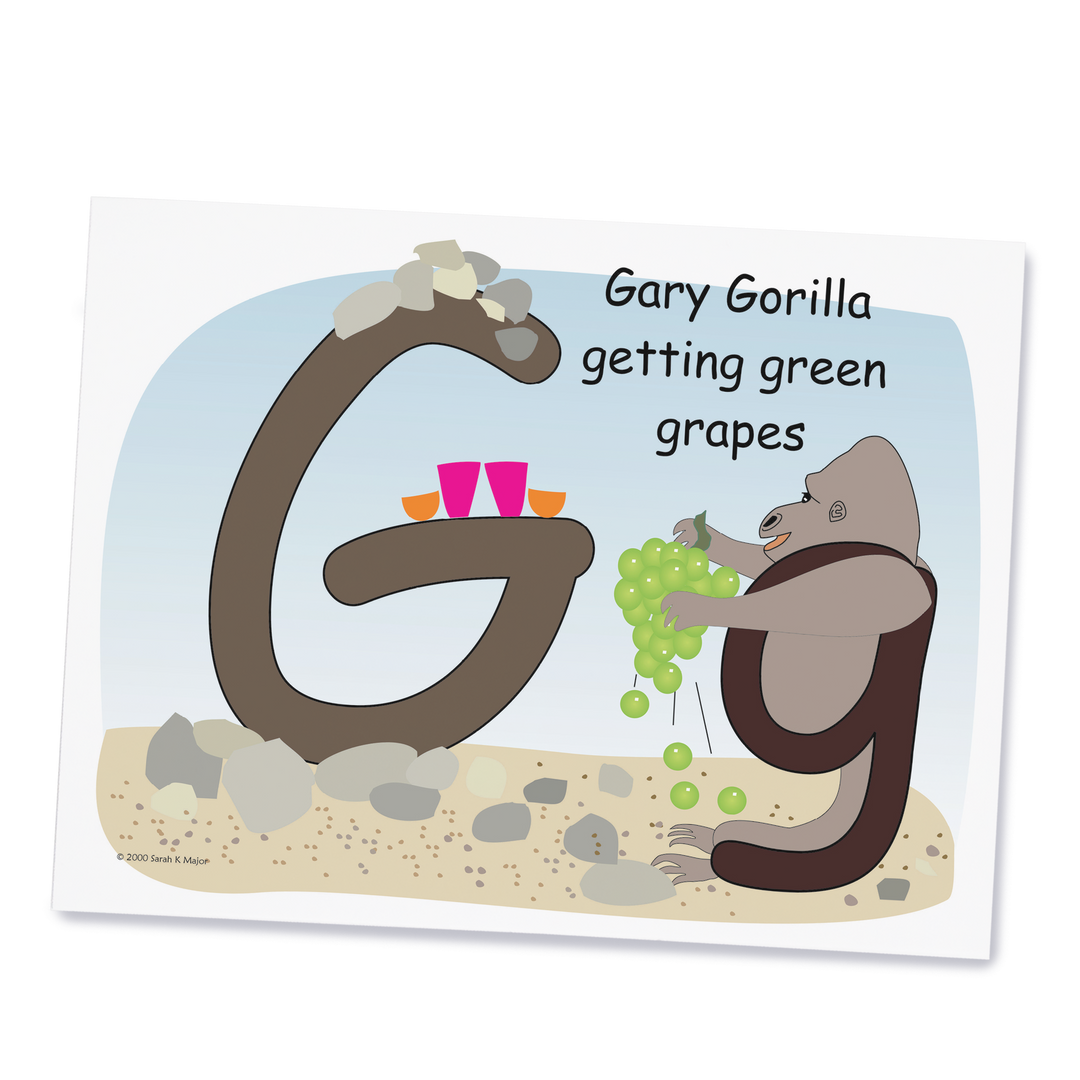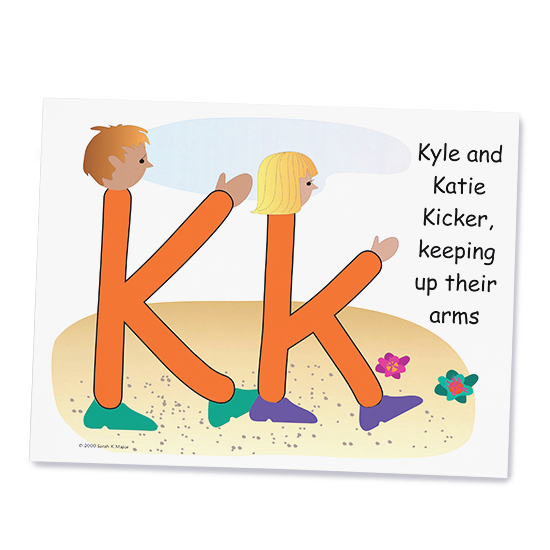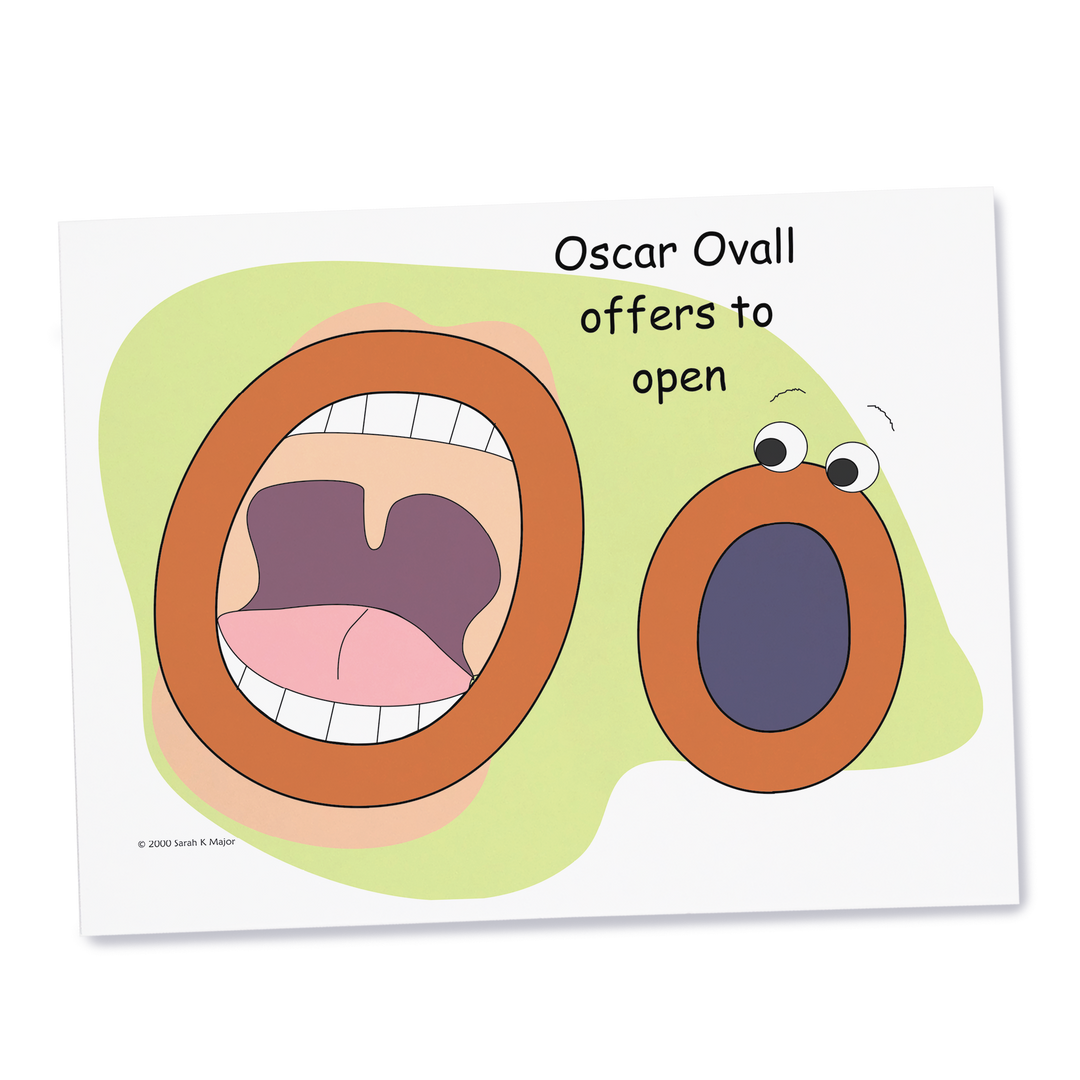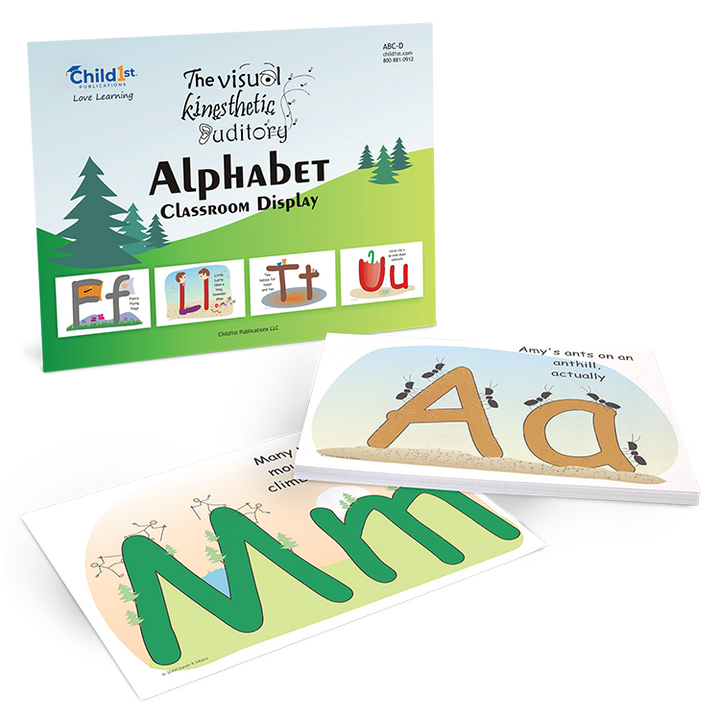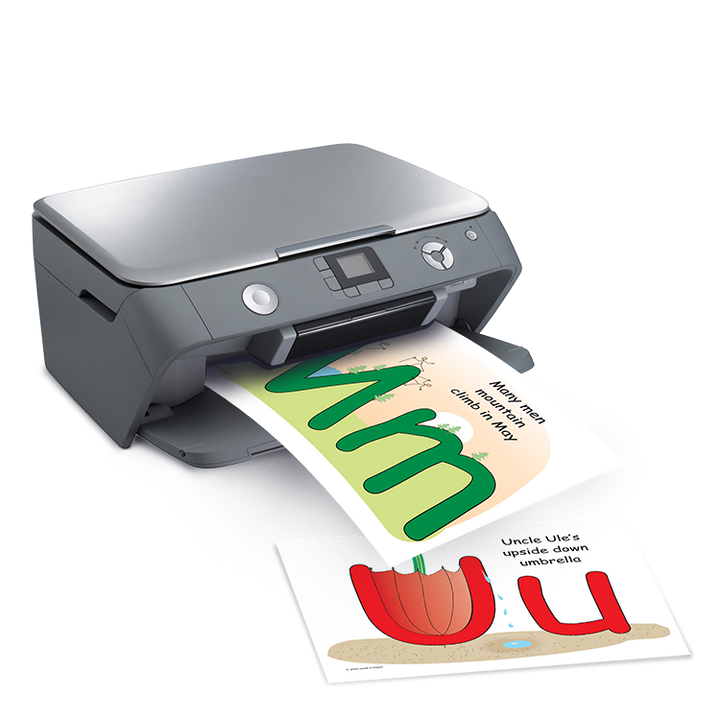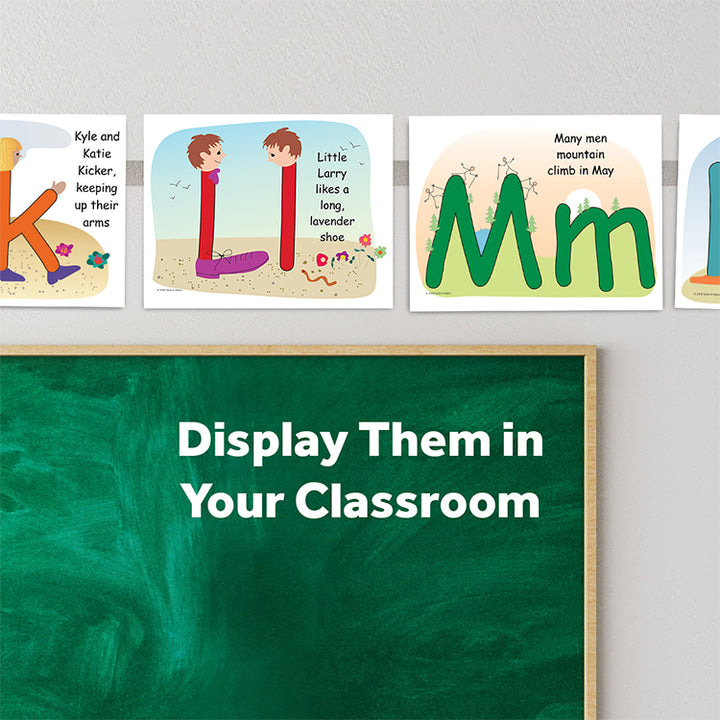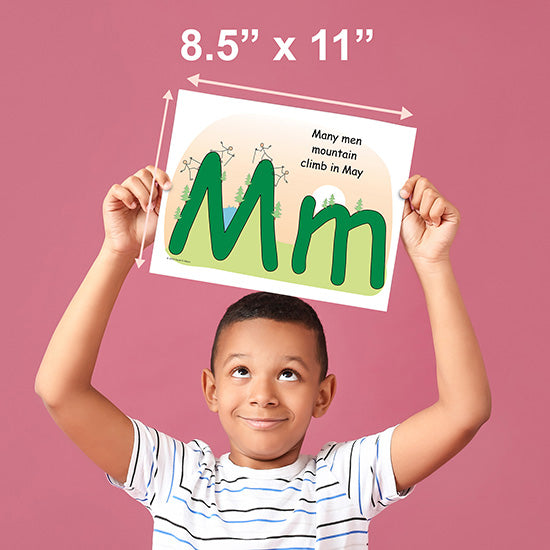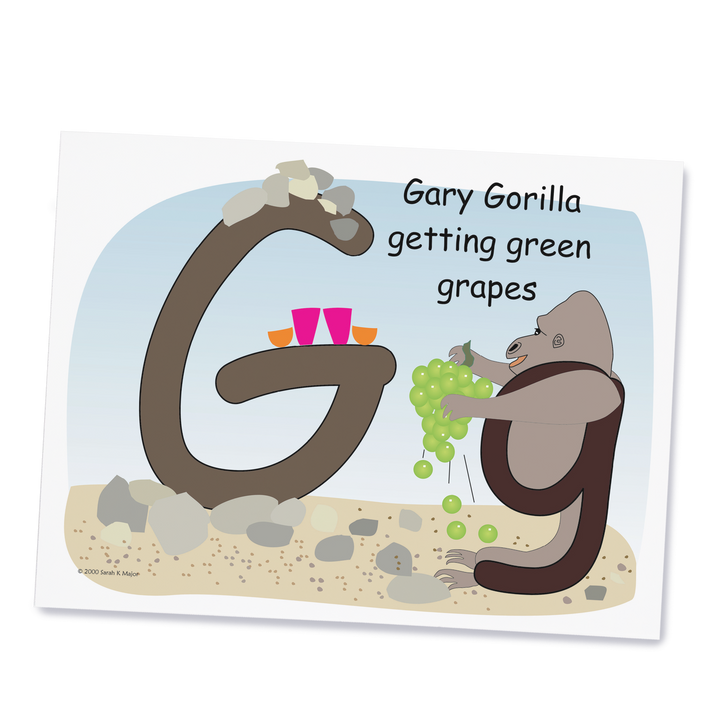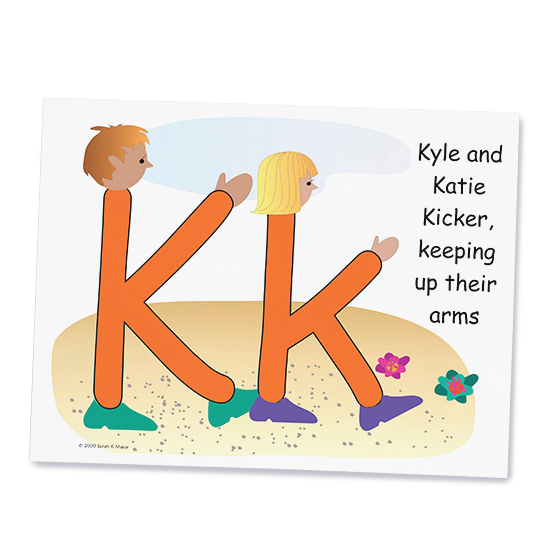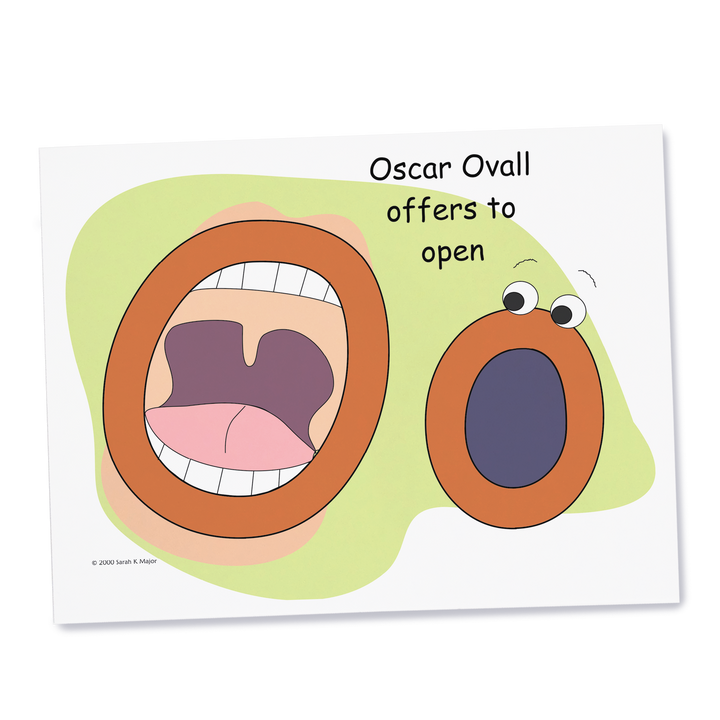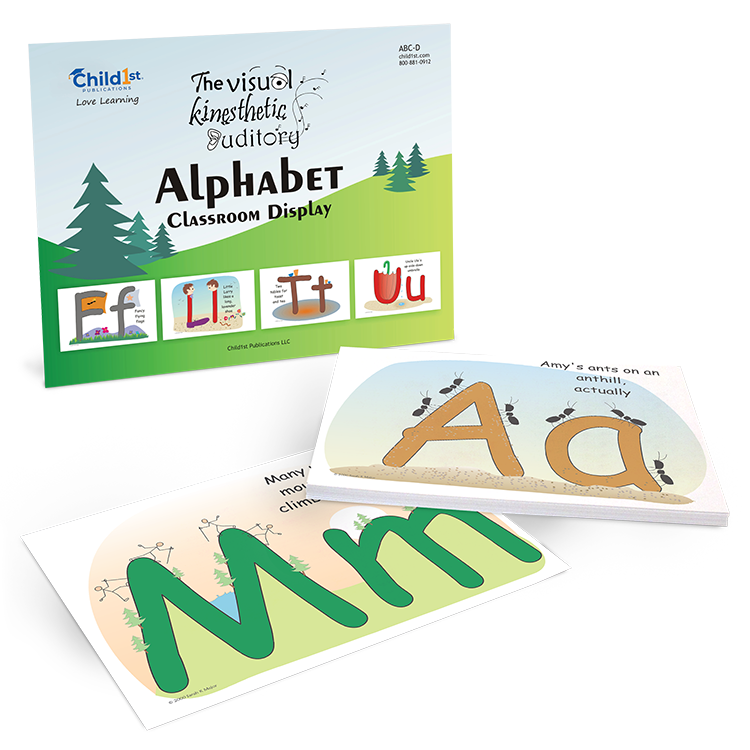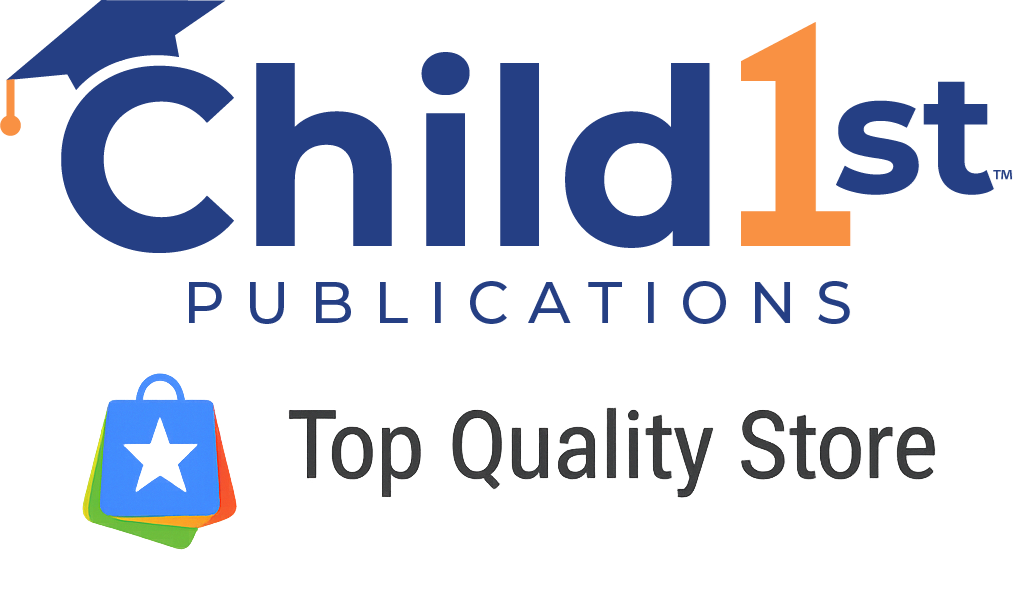Embark on an exciting educational adventure with Alphabet Display Cards, designed to complement the enchanting tales from Alphabet Tales. The Display Alphabet and accompanying book can be used in conjunction with Alphabet Tales or as a standalone resource. Tailor your approach based on the needs and preferences of your students, adapting the materials to complement other alphabet resources.
· Arrange the letters in alphabetical order on the classroom wall, creating a visually engaging and accessible display for young learners.
· Ensure that the Display Alphabet is easily visible to the children during reading sessions and other learning activities.
· Incorporate the mini lessons included in Writing the Visual, Kinesthetic, and Auditory Alphabet:
o Dynamic hand motions add a tactile dimension, enhancing the learning experience for kinesthetic learners.
o Follow-up tactile activities deepen learning by providing hands-on experiences related to each letter.
Alphabet Display Cards are available in two formats:
- Physical – physical cards, measuring 8.5” x 11”, and a physical book, measuring 8.5” x 5.5”
- Download - printable PDF file of the cards and the book
What’s Included
· Alphabet Display Cards
· Writing the Visual, Kinesthetic, and Auditory Alphabet



